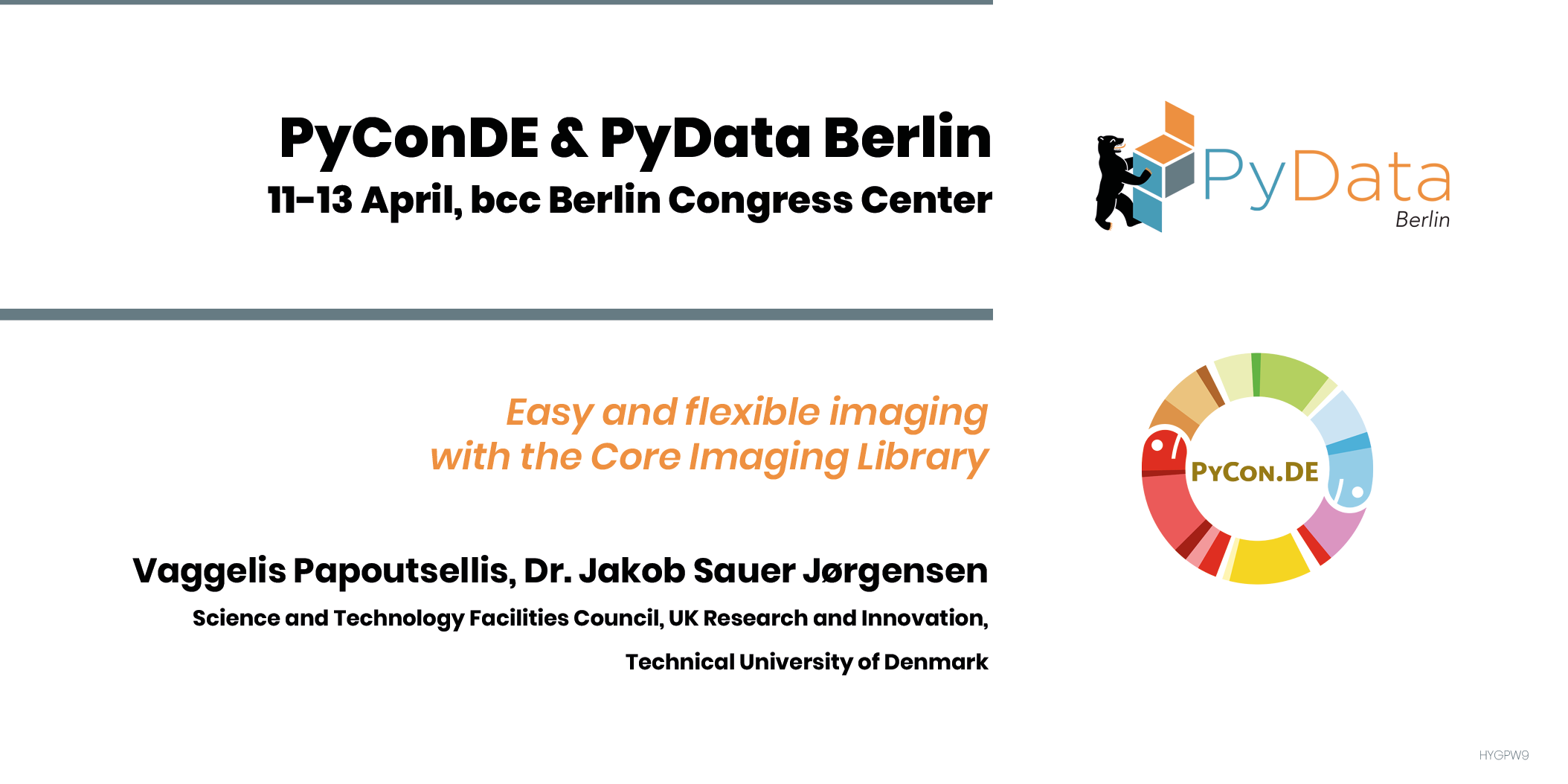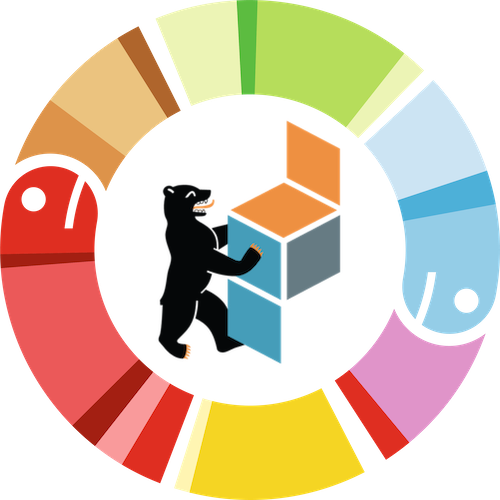Easy and flexible imaging with the Core Imaging Library
Vaggelis Papoutsellis, Dr. Jakob Sauer Jørgensen
What is CIL: The Core Imaging Library was developed by the Collaborative Computational Project in Tomographic Imaging (CCPi), a UK academic network, which unites expertise in the field of Computed Tomography (CT). Its aim is to provide the community with software to increase the quality and level of information that can be extracted by CT, with an emphasis in software sustainability, maintainability and distribution.
CIL for Tomography applications: Tomography, which literally means section imaging, is an inverse problem where the goal is to reconstruct an object, based on penetrating ray-path measurements. This imaging technique requires the solution of an inverse problem and is widespread in different domains such as materials science, medical imaging, biology and geophysics. The goal of CIL is to provide a user-friendly interface that covers all the tomography steps, e.g., data loading, pre-processing, reconstruction, post-processing and visualisation. Specifically, we focus on the reconstruction of real size tomography datasets, which require large memory and computation power, using analytic and iterative reconstruction algorithms. It has been tested in different tomographic scanners such as the
- Nikon Metrology X-ray,
- Diamond Light Source (Synchrotron)
- Neutron Imaging & Diffraction at the Science and Technology Facilities Council (STFC) and the
- X-ray imaging spectroscopy at the Henry Moseley X-ray Imaging Facility
covering a wide range of datasets, from simple single-channel, black-and-white data to more complicated, including hyperspectral and dynamic tomography data.
CIL for imaging applications: The modular design of CIL allows the user to formalise other imaging problems with a direct translation from complicated mathematical expressions to Python code. One can build a simple and fast prototype optimisation framework through a mix & match setting of different existing or user-defined functions and operators and use the CIL algorithms to solve problems such as image denoising, deblurring and inpainting.
This talk will cover the following topics:
- Brief introduction to inverse problems in imaging.
- Motivating examples: denoising, deblurring and inpainting.
- What is Tomography?
- Analytic and iterative tomography reconstruction using CIL. Live jupyter demo.
Takeaways: You will learn how to use the Core Imaging Library for several imaging problems with an emphasis on tomography reconstruction. All the resources for the talk, will be available on Github.
Vaggelis Papoutsellis
Affiliation: Science and Technology Facilities Council, UK Research and Innovation
Evangelos (or Vaggelis) Papoutsellis received a 5-year Diploma degree from the School of Applied Mathematics and Physical Sciences, National Technical University of Athens, in 2010. He continued his studies at the University of Cambridge, PartIII of the Mathematical Tripos (2011) and PhD in Mathematical Image Processing (2015). In the next three years, he worked as PostDoctoral Researcher in the University of Orleans and the Faculty of Medicine of the University of Tours in France. He moved back to the UK and worked for 2 years as a Research Associate at the University of Manchester. He is currently a Computational Imaging Scientist and Core Developer of the Core Imaging Library, providing support for the CCPi and CCP-Synerbi projects. His research area is on mathematical optimisation for imaging, especially tomography applications for medical imaging and material science.
visit the speaker at: Github • Homepage
Dr. Jakob Sauer Jørgensen
Affiliation: Technical University of Denmark
Jakob S. Jørgensen is a Senior Researcher at the Technical University of Denmark and a Presidential Fellow from The University of Manchester, UK. His current work focuses on algorithms and software for computed tomography and uncertainty quantification. He is one of the originators of the Core Imaging Library (CIL, ccpi.ac.uk/cil) for processing and reconstruction of computed tomography data.

